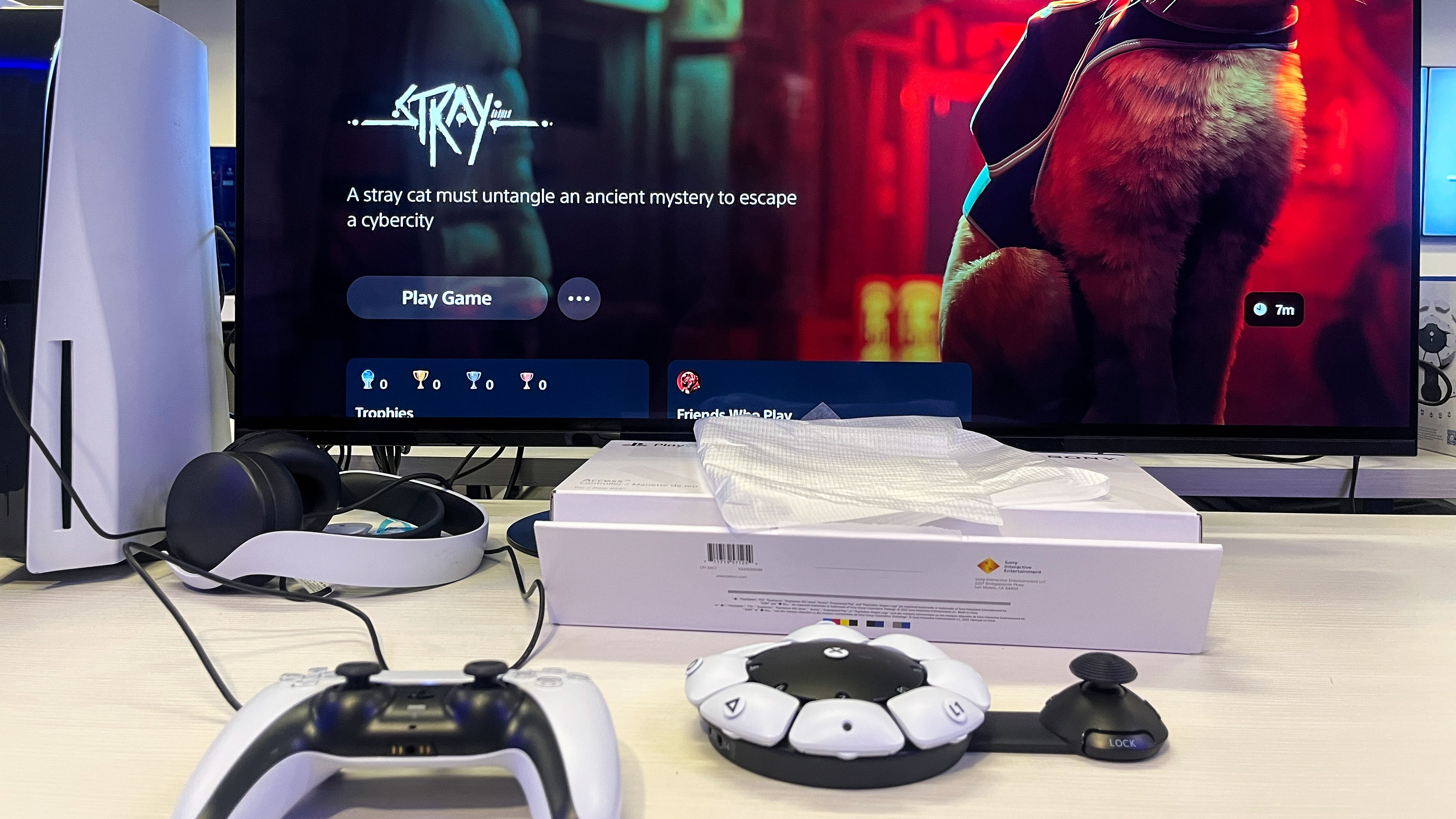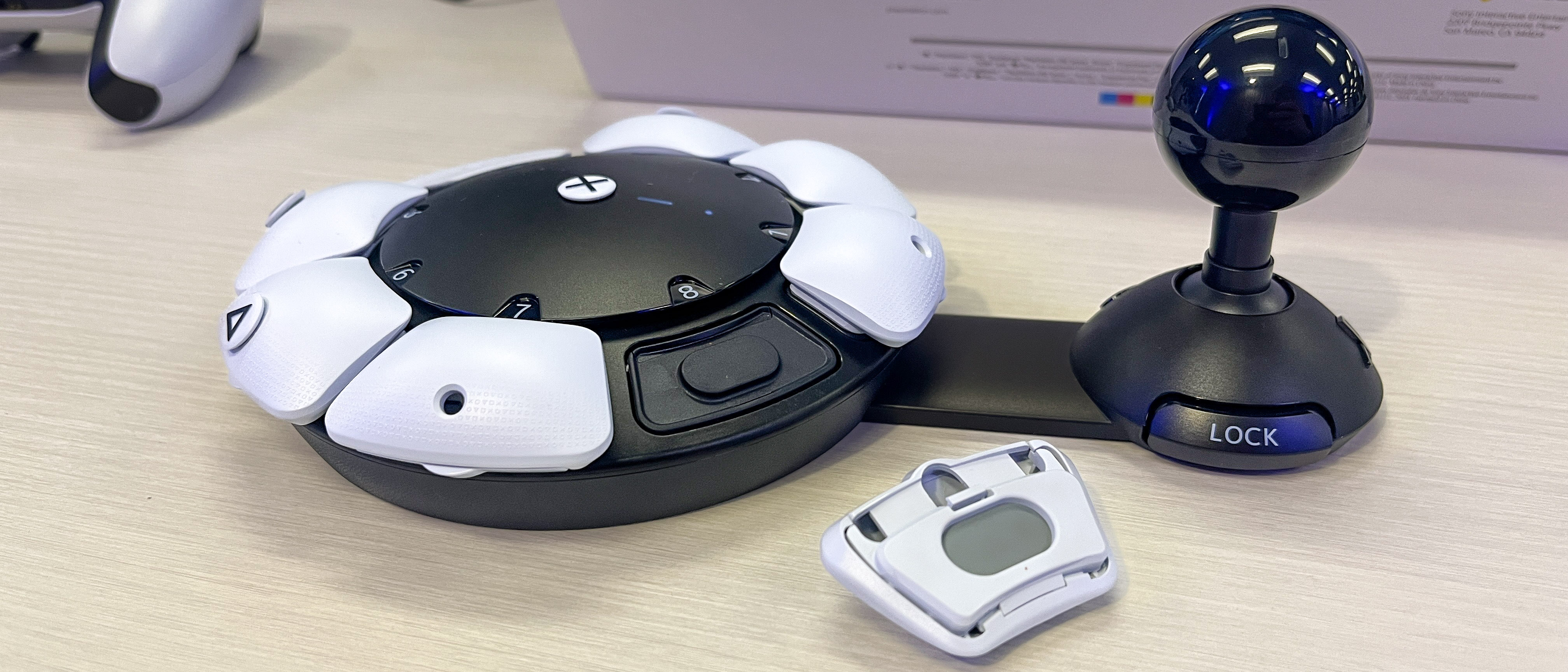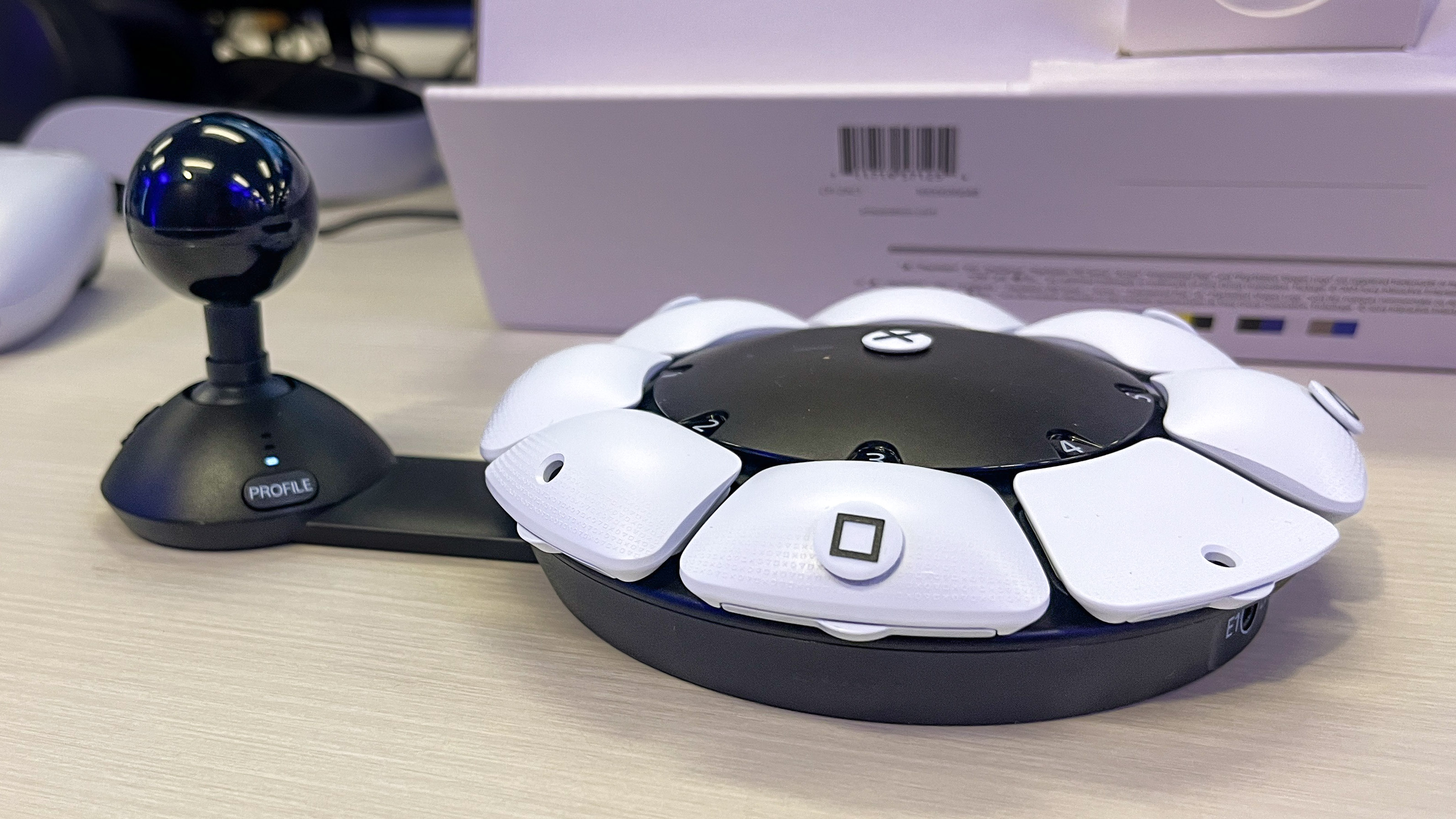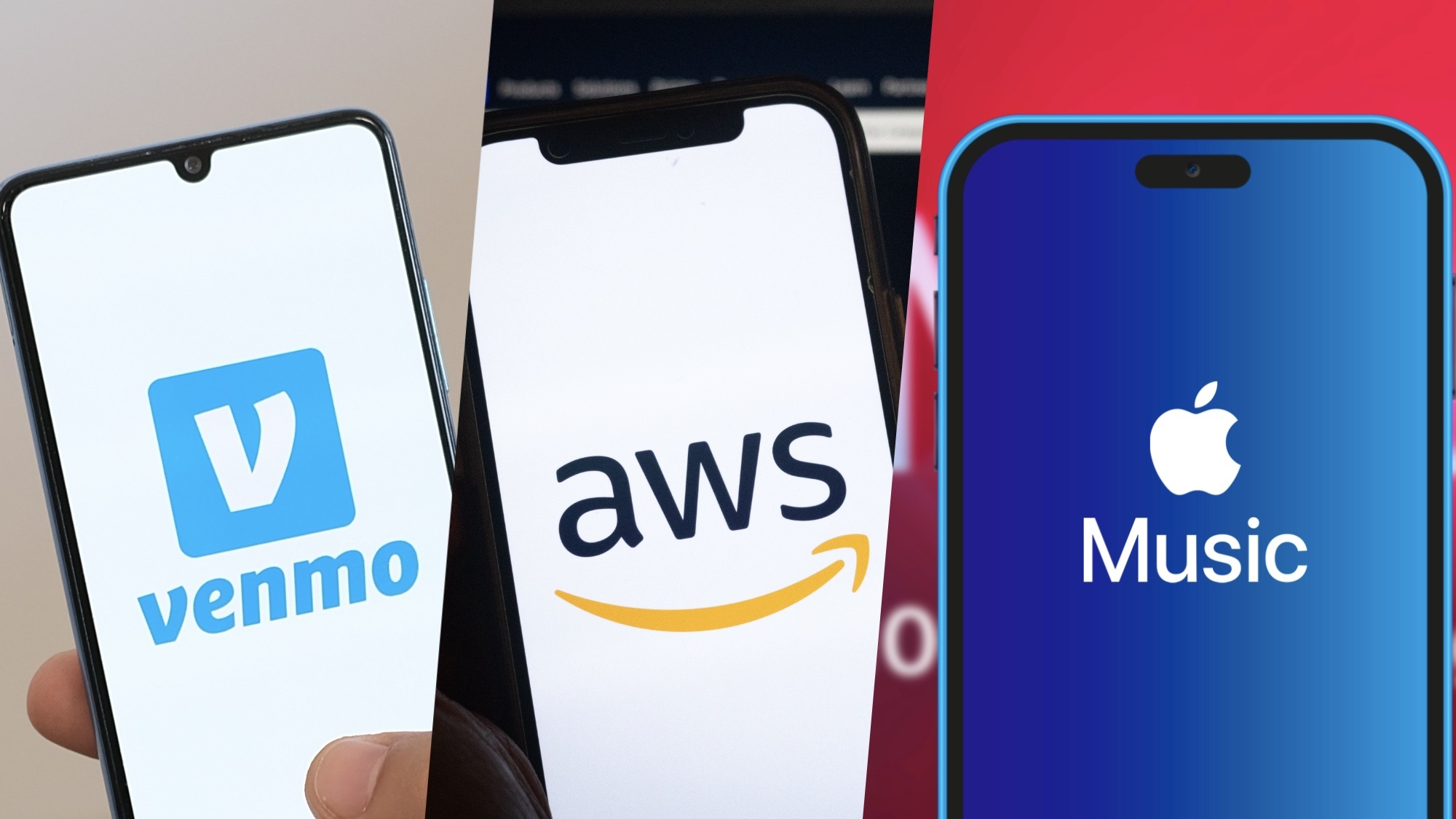Early Verdict
Sony's PS5 Access controller makes PS5 games more accessible for folks who have difficulty using traditional gamepads, offering a customizable ring of eight remappable buttons circumscribed by an adjustable joystick that feels great to use.
Pros
- +
Fully remappable button layout
- +
Hot-swappable button caps and labels are great
- +
Adjustable joystick makes this better than Xbox equivalent
Cons
Why you can trust Tom's Guide
Sony is releasing a new PS5 controller in December that aims to make playing games on the console a bit easier and more accessible for folks with disabilities.
I'm talking of course about the PS5 Access controller ($89), first announced at CES 2023 as Project Leonardo, a customizable and remappable circular gamepad with an adjustable joystick that extends out to the side.
It's designed to be more configurable and comfortable to use than the PS5 DualSense controller ($69) or the Sony DualSense Edge ($199), and that's value that anyone with discomfort or difficulty using traditional controllers can appreciate. I know because while I don't identify as disabled, I do suffer from repetitive stress injuries in both hands and wrists that make it painful to hold a gamepad.
My achy, painful hands and wrists forced me to basically give up gaming, so I saw no reason to buy a PS5 back when the console launched in November of 2020. But now that I've had a chance to get my hands on a PS5 Access controller at a recent Sony event in San Mateo, I'm starting to think maybe it's time for me to buy a PS5 after all.
PS5 Access controller hands-on review: Price and release date
You can pre-order the PS5 Access controller kit from Sony's website for $89, and each kit comes with a controller and a slew of swappable button and stick caps. The kits are slated to hit store shelves on December 6, 2023
PS5 Access controller hands-on review: Design
The PS5 Access controller looks like a black plastic dome surrounded by 8 swappable white buttons, with a black plastic joystick sticking out on an adjustable extension arm.
The arm can be adjusted in or out a few inches and locked into place, allowing you a bit more room to customize how far the stick is from the controller. You can also change the orientation of the controller when setting up a profile, which lets you rotate the controller into a comfortable position and then confirm that orientation so that when you press the stick forward it registers as forward in whatever game you're playing, whether the stick is above, below or to the side of the buttons.
Get instant access to breaking news, the hottest reviews, great deals and helpful tips.
Each of the eight buttons around the Access controller can be customized via your PlayStation 5, which can store up to 30 separate profiles for the controller. The controller itself can flip between up to 3 stored profiles with the push of a Profile button on the base of the joystick.
The Access controller also sports four 3.5mm expansion ports, two on either side of the USB-C port you use to plug it into your PS5. These expansion ports can be used to plug in additional inputs, like more buttons, sticks, pedals or other input devices. Logitech is partnering with Sony to sell an Adaptive Gaming Kit full of such extra buttons, much like the Logitech G Adaptive Gaming Kit for Xbox Series S|X that debuted in 2019.
The underside of the Access controller also sports AMPS mounts you can use to attach the gamepad to other equipment, so you can mount it on a wheelchair or other equipment.
PS5 Access controller hands-on review: Customization
The PS5 Access controller is exciting because it's so customizable, right down to the labels on the buttons.
Each kit comes with 19 swappable button caps and 3 swappable stick caps which let you tailor the feel of the controller a bit, whether that means trading out the domed stick cap for a more arcade-like ball cap or swapping the default pillow button caps for flat caps on some buttons to make them feel different beneath your hand.
The idea is to give you room to make the controller a bit more comfortable for your unique needs, and in my limited hands-on time with it I found the Access button caps to be easy to swap out and configure.
To help you keep track of how you've configured your controller you get 23 white plastic labels with the various PS5 button icons emblazoned on them. Each has a little soft plastic nub sticking out of the back that slides into a corresponding hole on each button, so swapping out labels is as easy as swapping facial features on a Mr. Potato Head.

Not only can you map any button on the PS5 controller as you see fit, but you can configure the gamepad to hit multiple buttons with one press, disable select buttons entirely or have a button press function as an on/off toggle instead. The toggle option adds minor but meaningful value because it helps folks like me avoid the pain and discomfort that comes from having to hold a button to, say, aim down sights in a game like Call of Duty: Modern Warfare 2.
Of course, Call of Duty already has an option built in that lets you switch aiming down sights to a toggleable action instead of something you have to hold a button down to accomplish. But the fact that the PS5 Access controller offers this feature at a hardware level means you can count on having access to it in any game, so you don't have to rely on game developers building such helpful features into their work.
PS5 Access controller hands-on review: Gaming performance
I haven't had much time to use the PS5 Access controller to actually play games, but the brief time I spent using it to play games like Horizon: Forbidden West at Sony's hands-on event left me feeling cautiously optimistic.
I've been holding controllers to play games on consoles and PC since I was young, and it took me a little time to relearn how to play a game using the PS5 Access controller. But once I got the hang of things I was able to muddle through basic navigation and combat encounters with it, and I like how much less painful it is for me to use a flat controller like this which I don't have to grip or squeeze. Being able to rotate the controller's orientation also gave me some welcome versatility, since I could easily flip the stick orientation when I wanted to swap which hand I was using to hold it.

However, the real breakthrough came when I started using the Access controller in tandem with a normal PS5 DualSense controller. The Access controller is specifically designed to work like this, either with a DualSense, another Access controller, or both (for a total of three controllers), and it's great because it lets you use the additional buttons and sticks on the DualSense without having to grip or hold anything. That's a huge win for me because I can't really hold a DualSense, but I can set one down on a coffee table next to the Access controller, then lay my hands flat on both and use them to play basically any modern game.
This is really the ultimate promise of the Access controller: Versatility. By itself it's not a one-size-fits-all solution for everyone who has trouble with the DualSense, because it can't possibly satisfy that need. Instead, it gives you an alternative way to play games on your PS5, and though you do need to spend some time fiddling with it and relearning how to do everything game developers expect you to do on a gamepad with the Access controller, I think it's well worth it for the chance to play and enjoy games again.
PS5 Access controller hands-on review: Outlook
While I've only spent a few hours with the PS5 Access controller under Sony's watchful gaze, I'm cautiously optimistic about what the company has accomplished with this device.
I've loved video games since I was a kid, but all those hours spent gripping gamepads has done a number on my hands and forced me to basically give up the pastime. Now that I'm finally relearning how to play games in ways that won't hurt me, I've developed a keen appreciation for devices like the Xbox Adaptive Controller, which Microsoft launched in 2018 to make playing games on Xbox more accessible and approachable for folks with disabilities.
But I bought the Xbox Adaptive Controller to play games more comfortably on my Xbox Series X, and I found its lack of a joystick really limited its functionality. Worse, when I tried to buy compatible joysticks I could plug in via 3.5mm jack, I found the sticks suggested by Microsoft were either poor quality or completely incompatible with the Xbox.
Sony's PS5 Access controller kit is $10 cheaper than the Xbox Adaptive Controller kit yet comes with an adjustable joystick attached, which is great to see. I also love how configurable and customizable it is on a software level, though I'm concerned that Sony is limiting its value by baking that customizability into this controller instead of mandating game developers build accessibility features like remappable controls into their games.
But of course, we'll have to wait until the PS5 Access controllers launch in December to know how useful and usable they really are. Stay tuned!
More from Tom's Guide
- PS5 DualSense is one of the coolest controllers ever made
- Xbox Elite Wireless Controller Series 2 Review: The best gets better
- I use this app to completely customize my controllers on PC

Alex Wawro is a lifelong tech and games enthusiast with more than a decade of experience covering both for outlets like Game Developer, Black Hat, and PC World magazine. A lifelong PC builder, he currently serves as a senior editor at Tom's Guide covering all things computing, from laptops and desktops to keyboards and mice.



